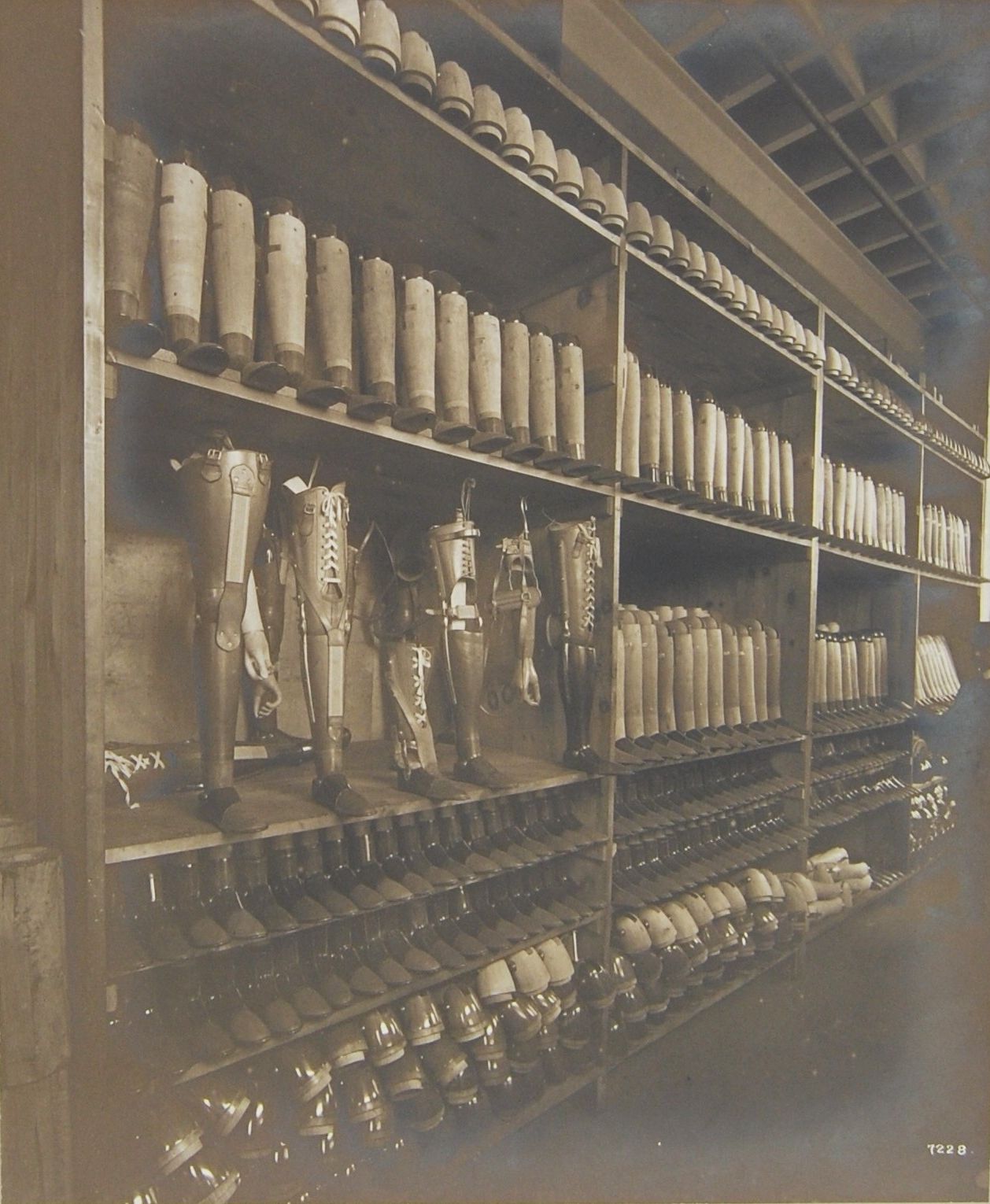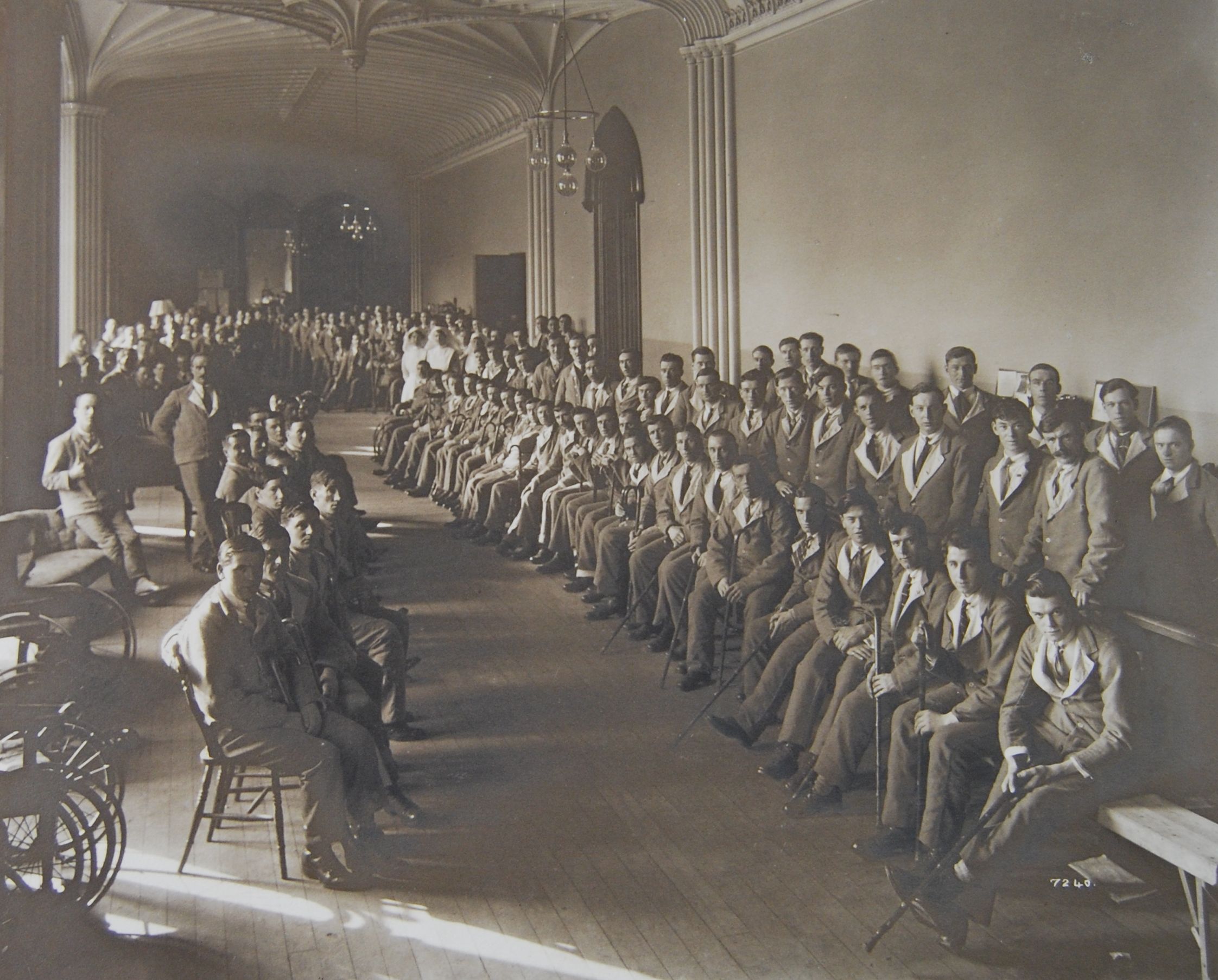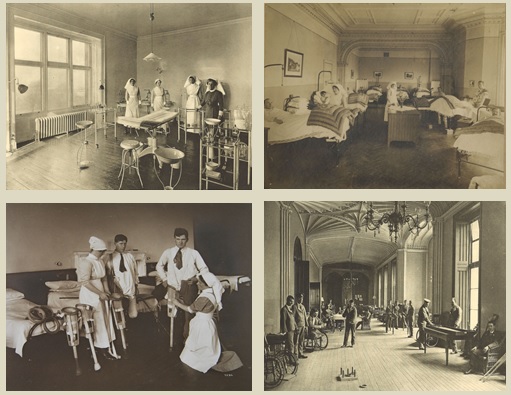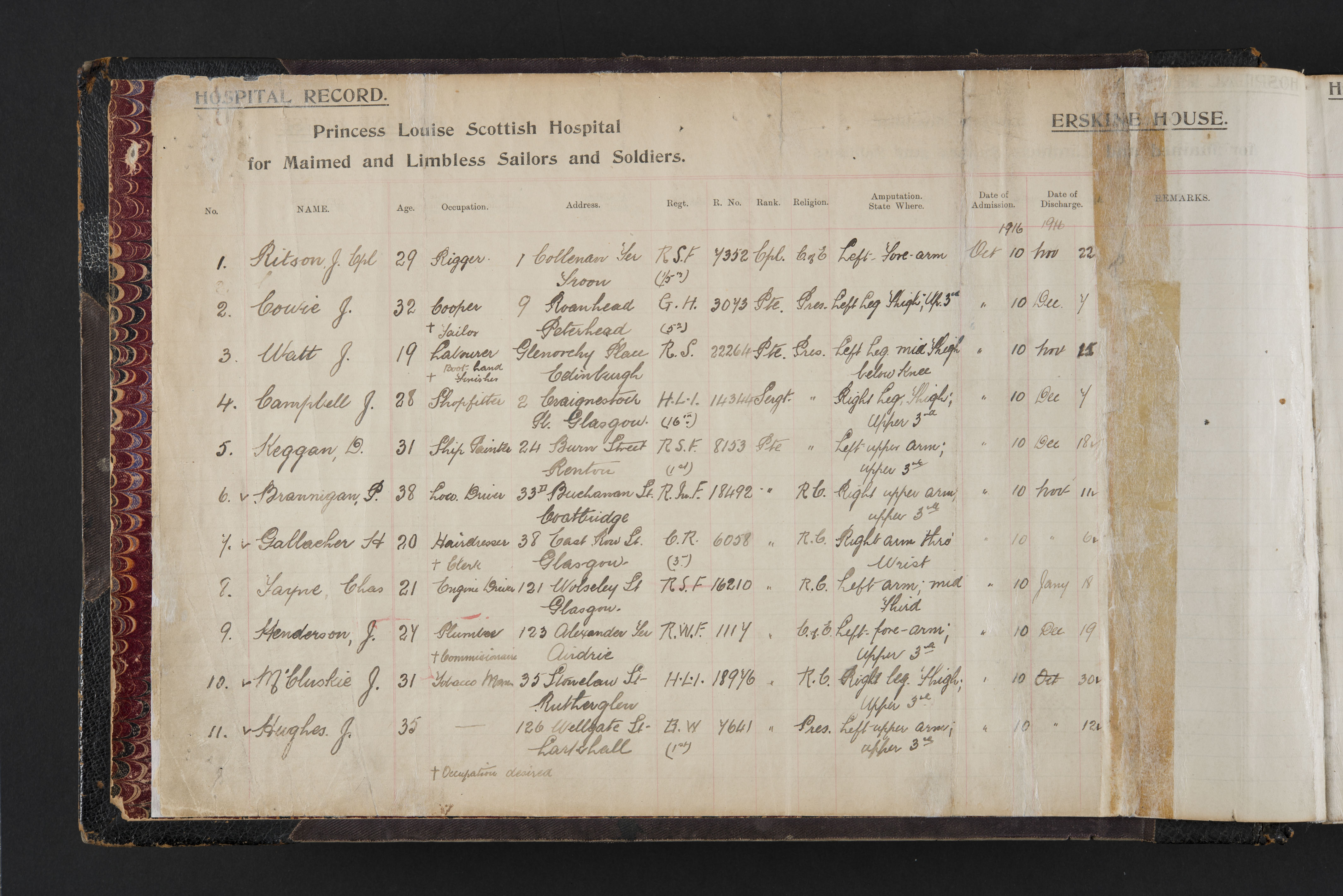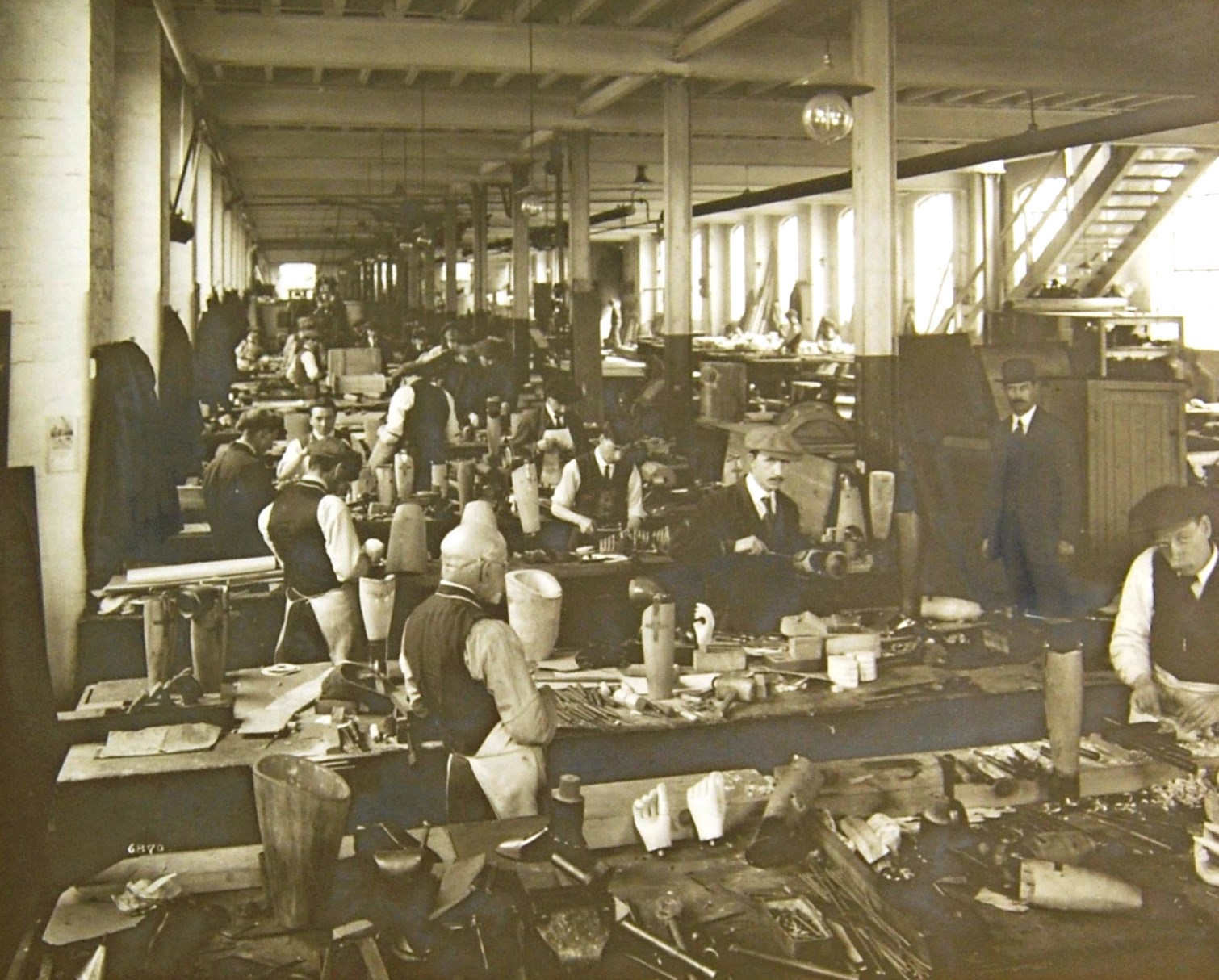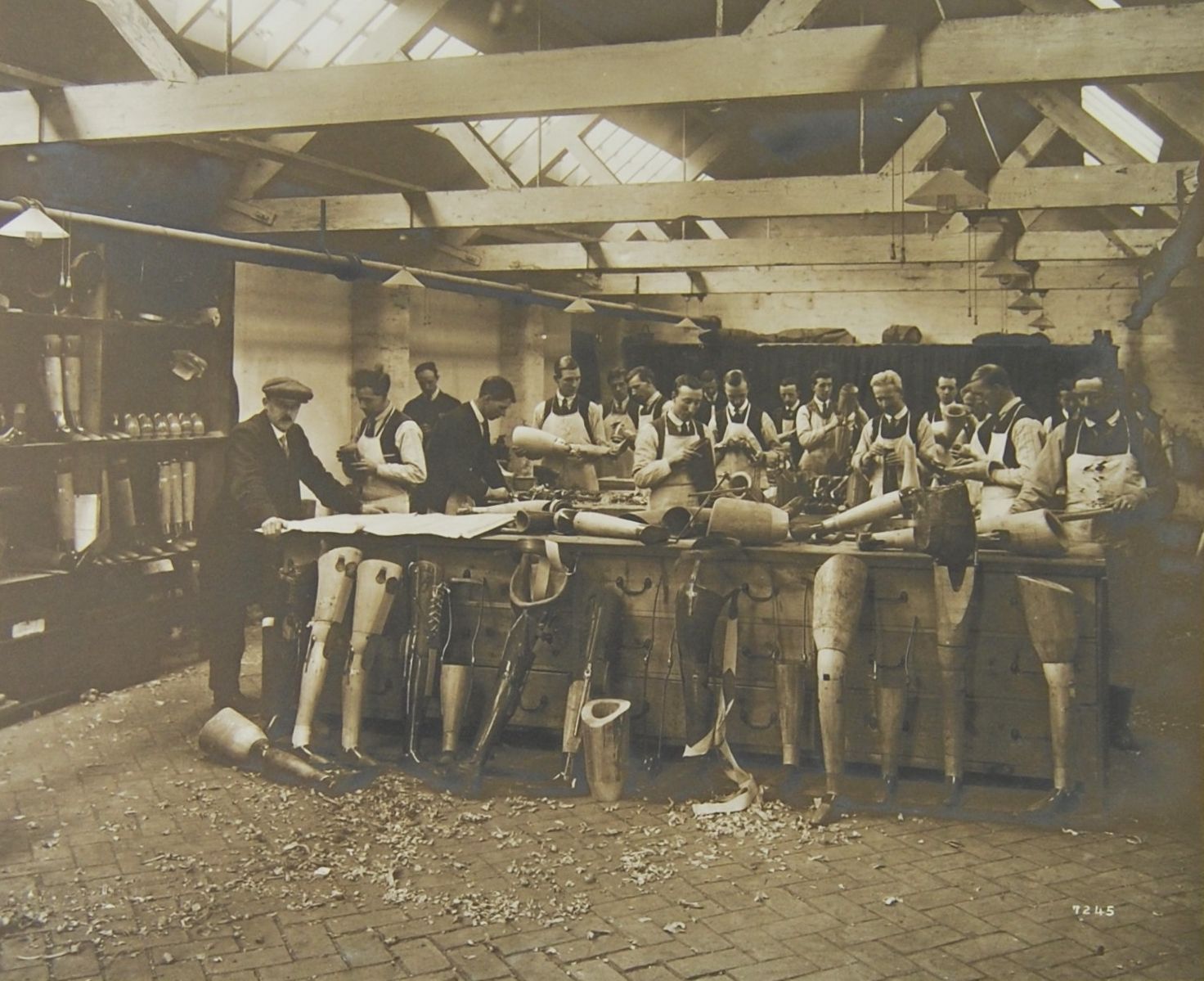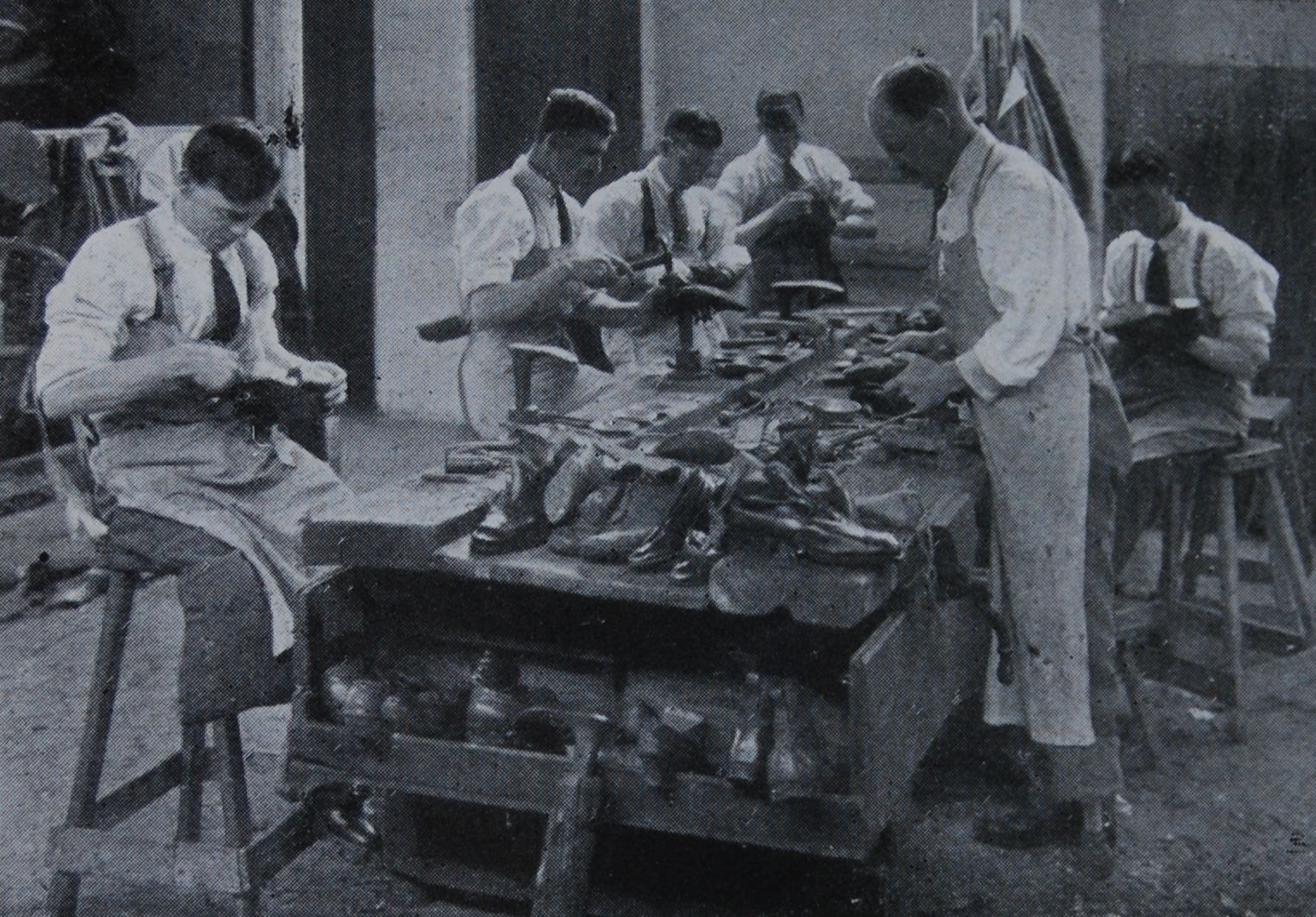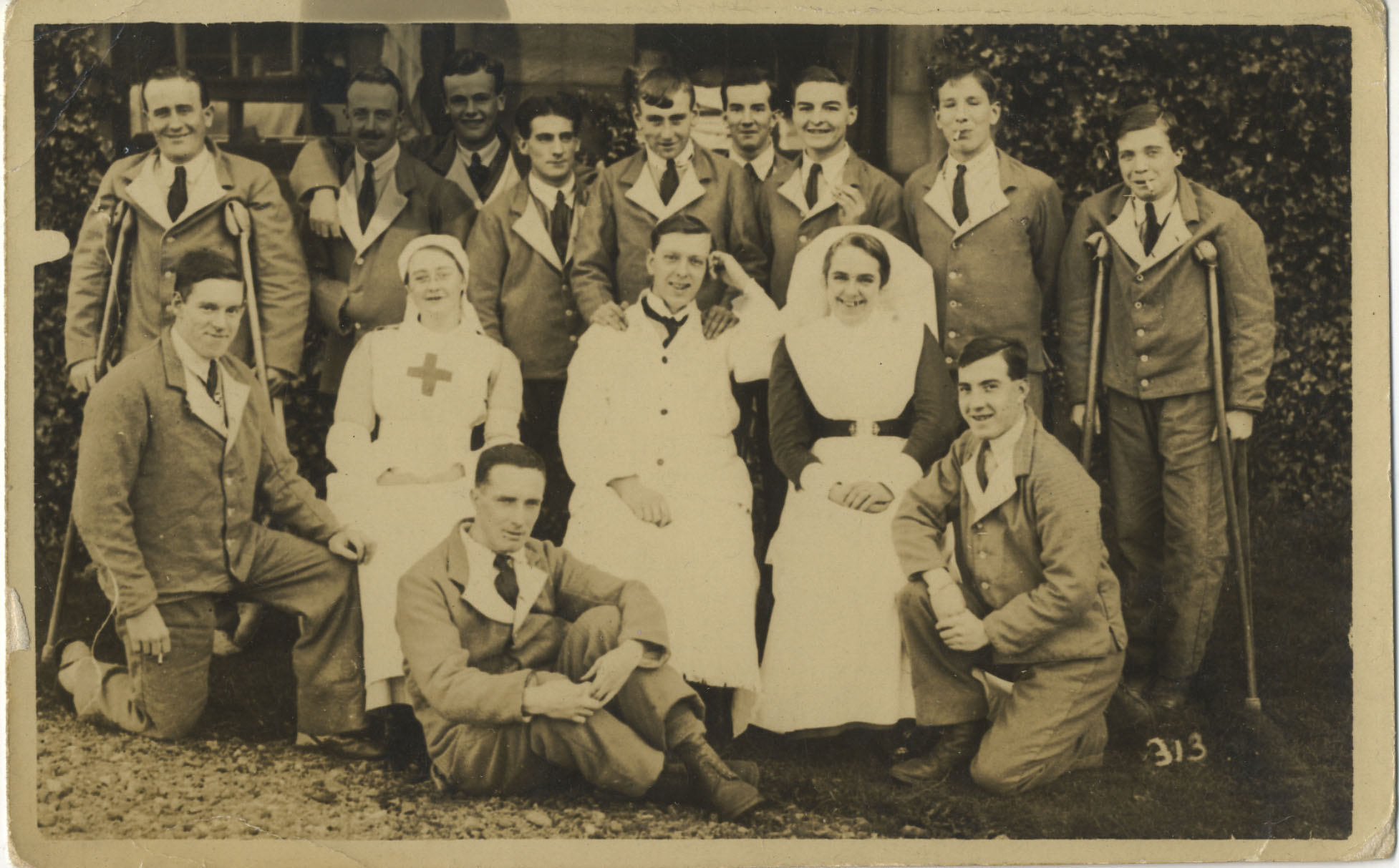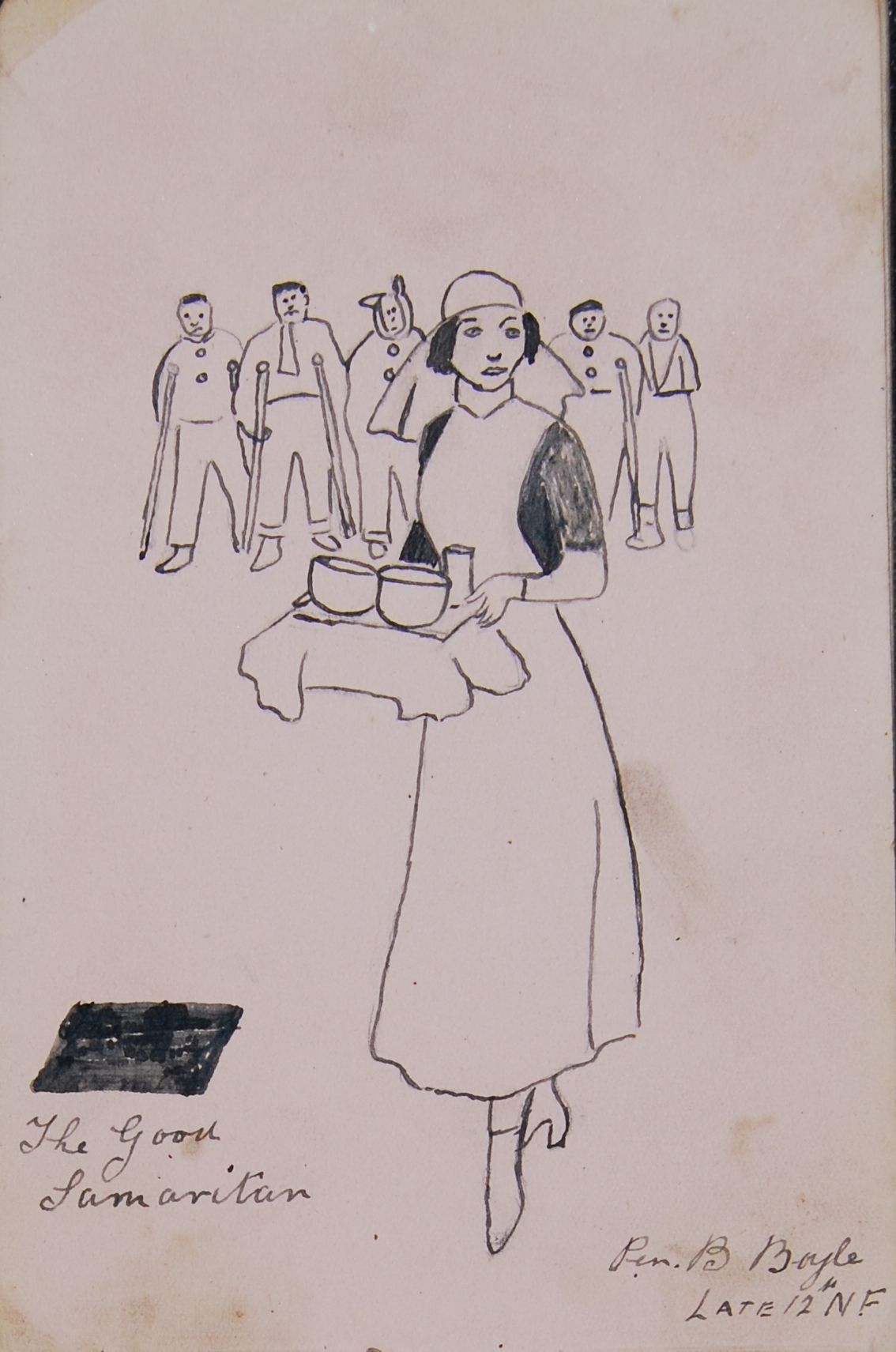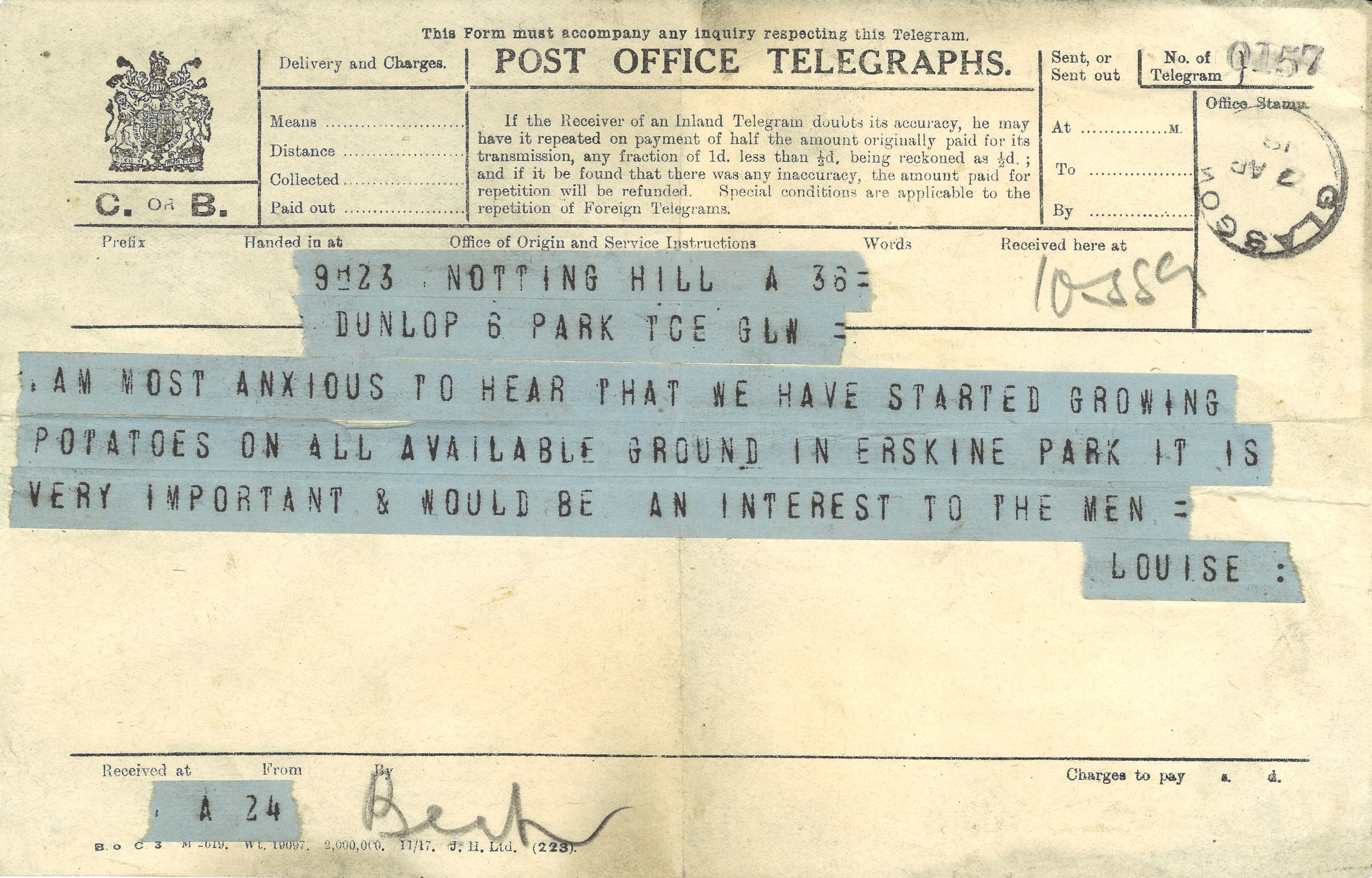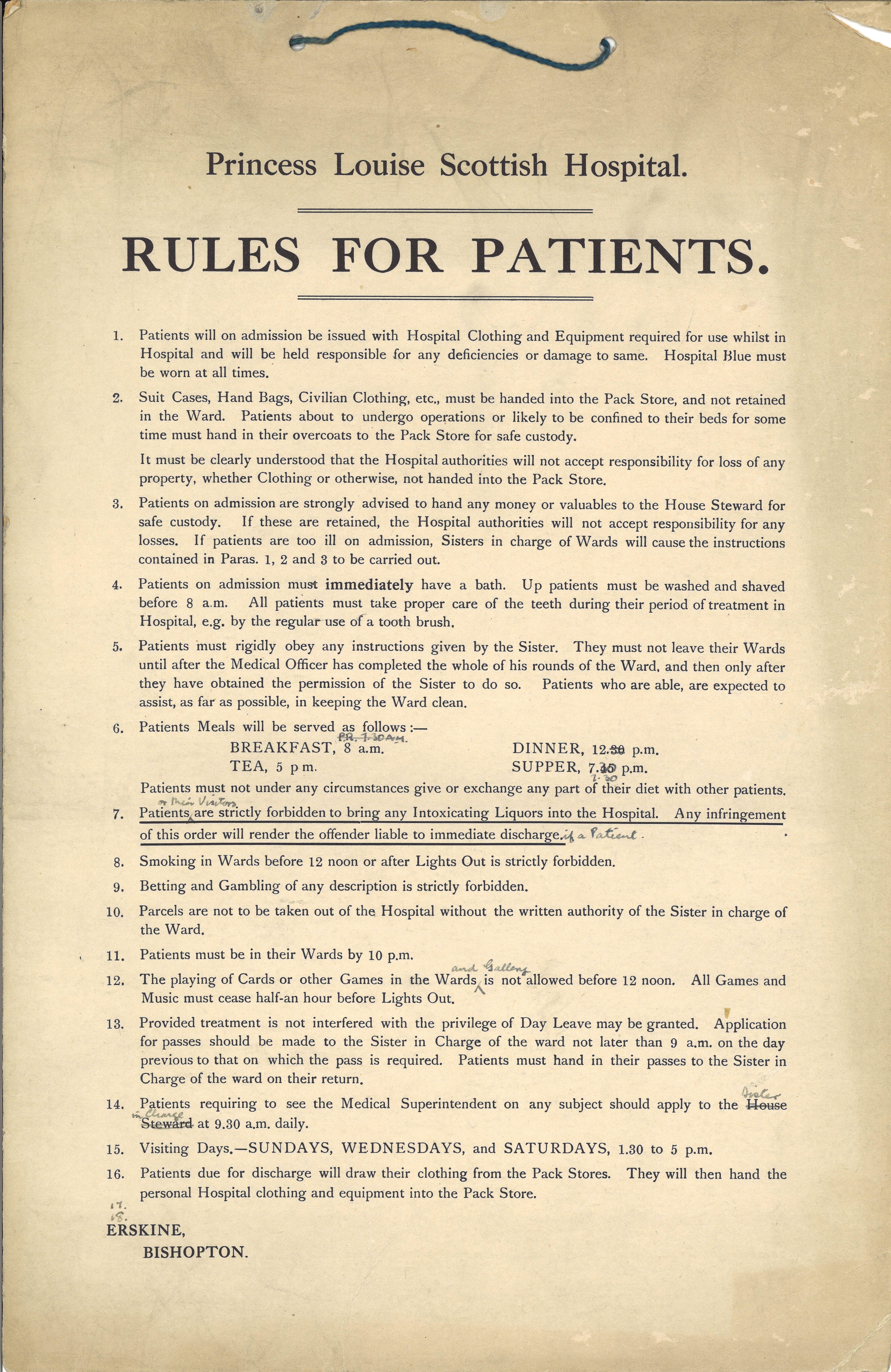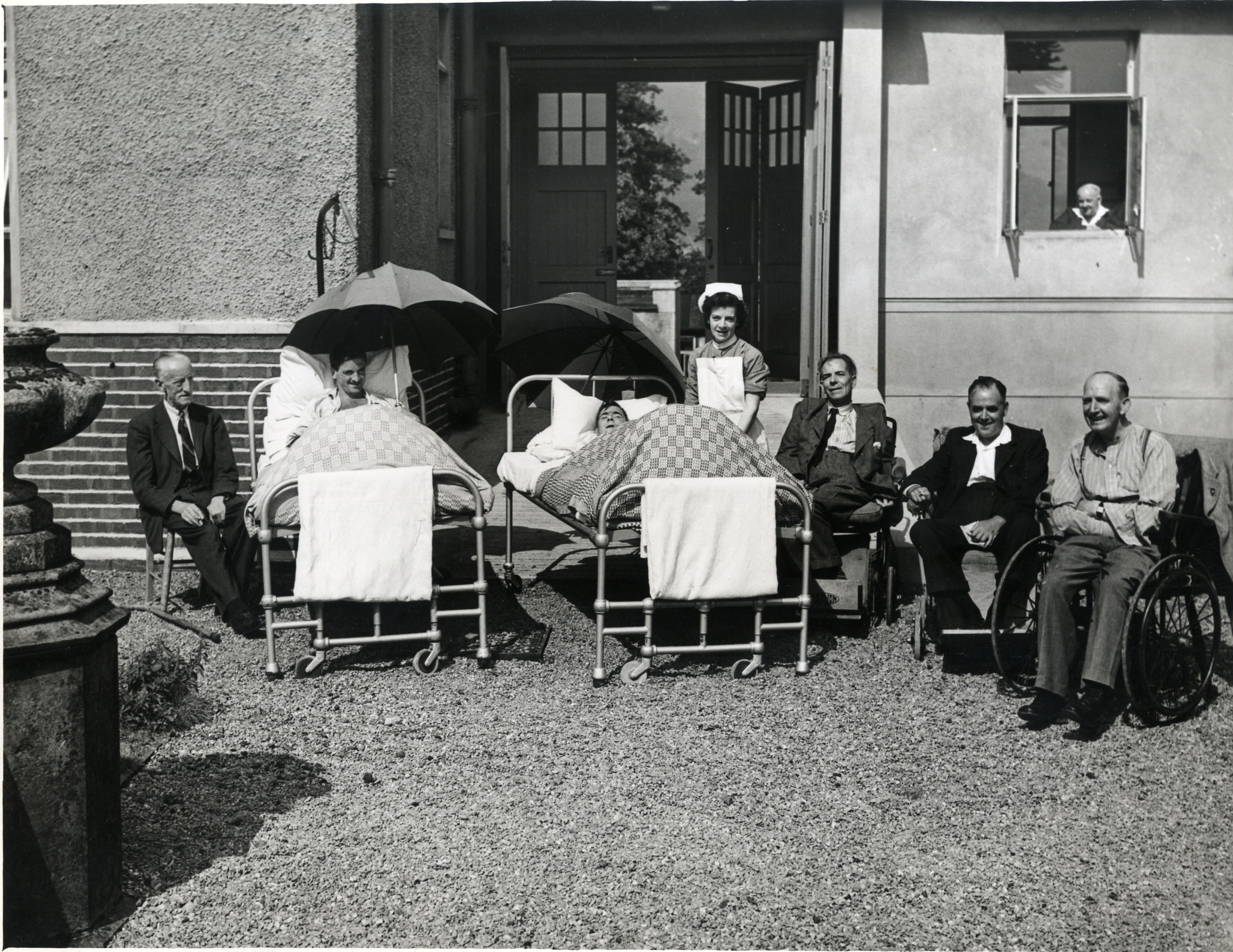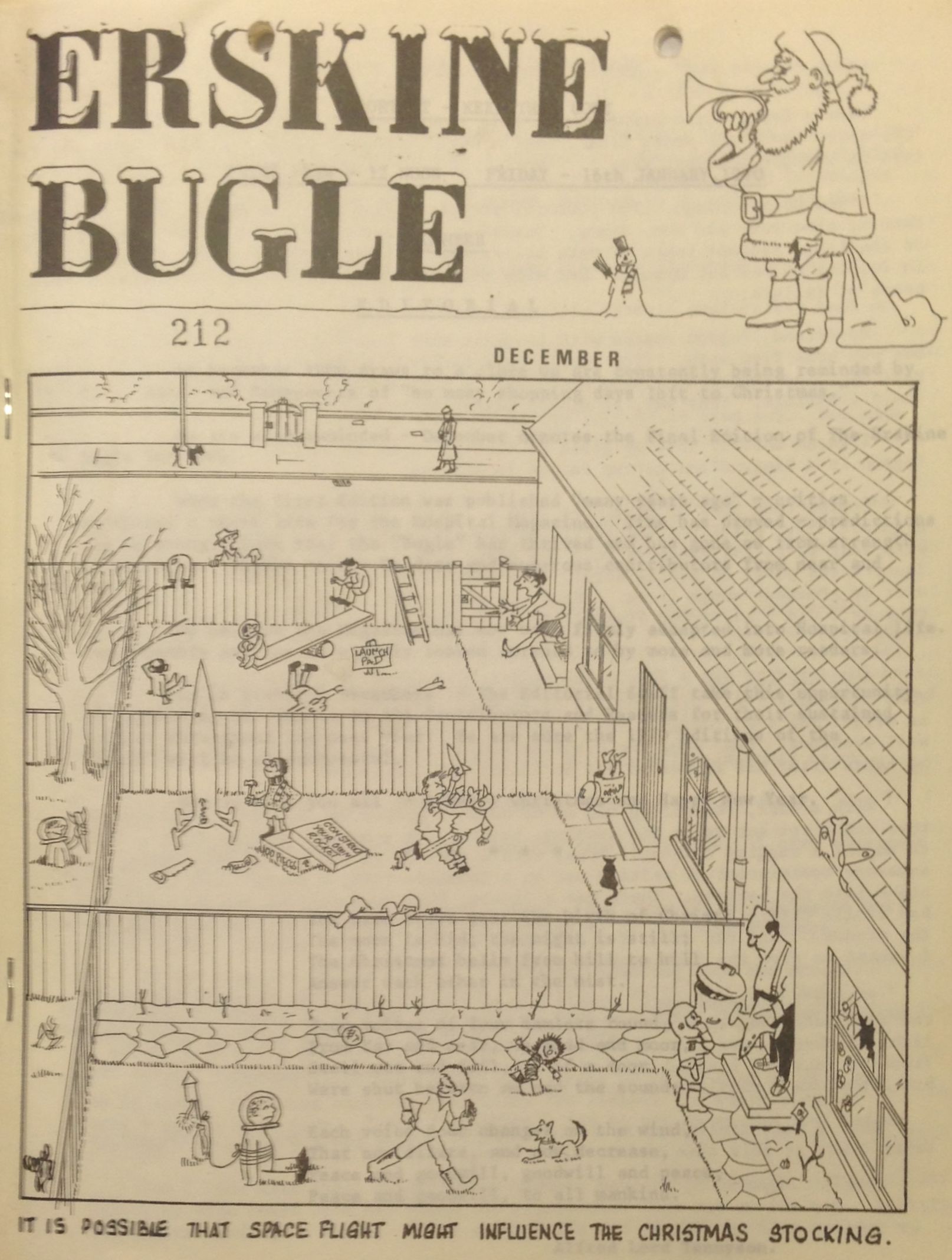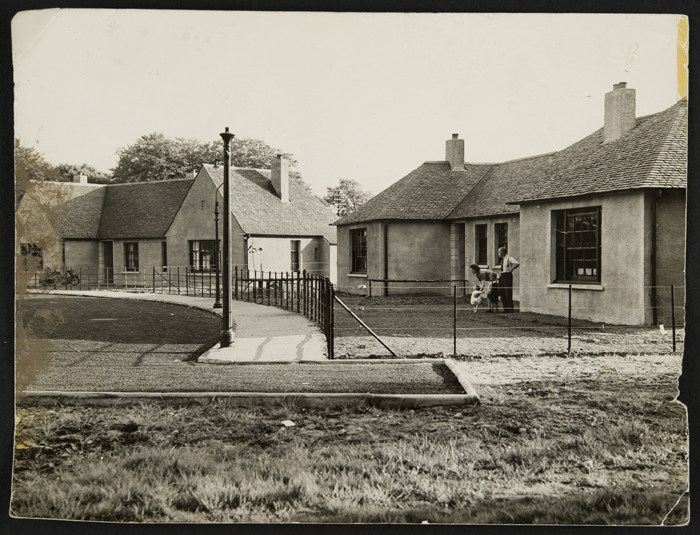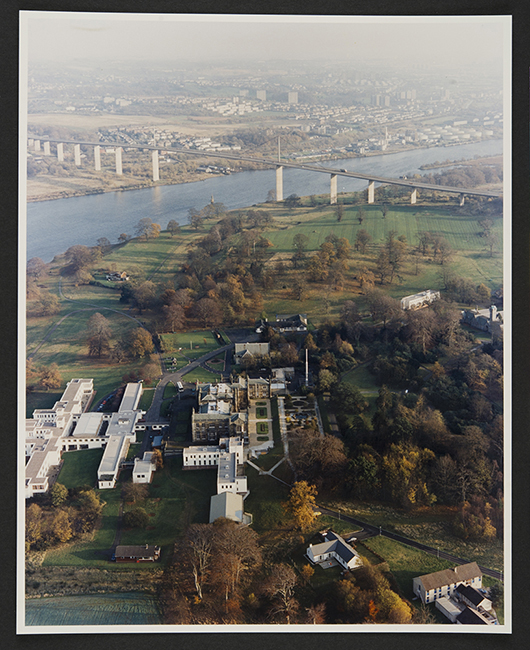Erskine Archive Project
In 2014 the University of Glasgow Library and the charity Erskine formed a partnership to catalogue and preserve the records of Erskine Hospital, which opened in 1916 as the Princess Louise Hospital for Limbless Sailors and Soldiers. This partnership is the result of Prof Tony Pollard’s research into pioneering surgeon Sir William Macewen’s connections with Erskine.
The Erskine archive has great potential to provide a foundation for a new analysis of the practice & impact of military medicine on British society, particularly in relation to prosthetics. The cataloguing undertaken by Archive Services will open up new avenues of research into the impact of the charity’s work in supporting veterans through the 20th century and beyond.
The collection catalogue is now available to view here
This project is funded by the Wellcome Trust’s Research Resources Grant Scheme, which aids research by supporting projects to catalogue and preserve significant primary source collections in libraries and archives across the UK and Ireland.
Dr Jennifer Novotny, who was in receipt of a Wellcome Trust Research Bursary, has published an article To 'take their place among the productive members of society': Vocational rehabilitation of WWI wounded at Erskine and a blog post What we learned from World War I’s wounded veterans based on her research on the Erskine collection.


